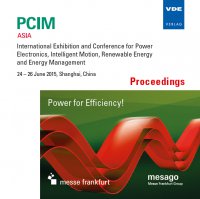Pressureless Sintering of Nano-Ag Paste with Low Porosity for High Power Die Attach
Conference: PCIM Asia 2015 - International Exhibition and Conference for Power Electronics, Intelligent Motion, Renewable Energy and Energy Management
06/24/2015 - 06/26/2015 at Shanghai, China
Proceedings: PCIM Asia 2015
Pages: 10Language: englishTyp: PDF
Personal VDE Members are entitled to a 10% discount on this title
Authors:
Chen, Fen (Indium Corporation, China)
Chen, Sihai; Fan, Guangyu; Yan, Xue; LaBarbera, Chris; Kresge, Lee; Lee, Ning-Cheng (Indium Corporation, Clinton, NY USA)
Abstract:
A novel nano-Ag sintering paste C has been developed for a pressureless sintering process under air. Paste C was sintered at 250deg C (C1) and 280deg C (C2), respectively; C1 showed a slightly higher porosity but a higher shear strength after aging at 250deg C for 840 hours. Both C1 and C2 exhibited a microstructure much more stable than the control solder 92.5Pb5Sn2.5Ag, which suffered both IMC spalling after thermal aging and voiding. Ag migration toward the DBC to form a dense layer of AgCuNi(Au) was observed for all nano-Ag pastes studied, with C1 and C2 being more moderate in the migration rate. The Ag migration could be attributed to the tendency of Ag to form alloy with Au, Ni, and Cu at the DBC side, and may be affected by the chemistry of nano-Ag paste. The porosity of sintered joints was lower toward center of die, due to the venting route factor. The porosity was also lower with a higher bondline thickness, due to a reduced tension in the joint. Thermal aging time has negligible effect on porosity, presumably due to balanced stress between tension and sintering shrinkage. The maximum service temperature of Ag sintered joint is about 470deg C, versus 230deg C for high-Pb joints.


